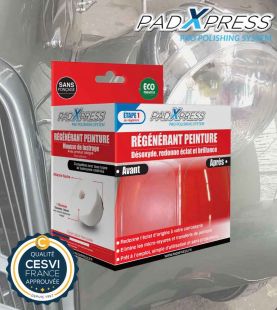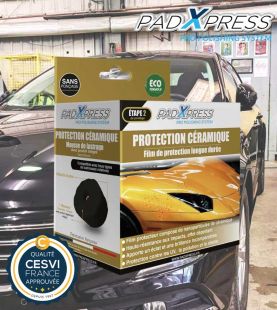
Successful buffing: 10 mistakes to avoid
Polishing is an essential step to keep a shiny and protected bodywork. But beware, many mistakes can ruin all your efforts and compromise the final result. This could lead either to redoing your polishing or, in the worst case scenario, having to repaint the damaged body part. Here are 10 mistakes to avoid for successful polishing.
1. Neglecting to clean the surface before polishing:
Before polishing, your car or any other surface you need to polish must be perfectly clean. Even the slightest dirt can create micro-scratches during polishing. If it's for a bodywork or a boat hull, use shampoo and a high-pressure cleaner to remove all traces of dirt and dust. If the polishing is to be done on delicate surfaces, clean with a damp sponge and a microfiber cloth.
2. Polishing on a still wet surface:
After the cleaning phase, you might feel like immediately moving on to polishing. But it's not necessarily a good idea because even if the surfaces seem dry to you, water droplets hidden under the seals could ruin your work. Moisture and polish don't mix well, so also avoid starting the complete polishing of your car if the weather is threatening.
3. Not working by zone:
When starting out in polishing, you need to apply a certain logic. It's not about starting to spread product everywhere. Try to work by zone. For a hood, for example, divide the surface into 4 zones. Polish the first zone, wipe it off, and move on to the next zone. Depending on the outside temperature, adjust the size of the zones.
4. Polishing in direct sunlight:
Great! It's sunny, it's the moment you've been waiting for to give your vehicle a little shine under the sun. But be careful, the sun is hot! And if you don't want to spend the day trying to remove dried polish traces, park your vehicle in the shade and let the surfaces cool down. Polishing in direct sunlight should be avoided no matter the surface to be treated.
5. Applying too much product:
A thick layer of polish or wax is not more effective; it will just be harder to remove. The PadXpress technology with integrated product allows better management of the amount of polish. Apply a thin, even layer in circular movements.
6. Exerting excessive pressure on the polisher:
There's no need to force to polish the bodywork. You place the polisher and let the machine do the work. There's no need to press too hard. Excessive pressure could damage the paint.
7. Using an unsuitable cloth:
If we have one piece of advice to give you, it's to use a clean microfiber cloth to wipe off the polish traces. Avoid taking the cloth lying around on your workbench, even if it seems clean. A simple speck of dust, a bit hard, and you'll have to use a scratch eraser, and start the polishing over.
8. Neglecting hard-to-reach areas:
If you're going to revive a bodywork paint, you might as well do it right. Some often hard-to-reach areas still require attention. Just because they're hard to reach doesn't mean they're not visible. Among these areas, we'll mention mirror shells, door handle surrounds, or door entries. The devil is in the details.
9. Not protecting sensitive areas:
Concealing, masking, it's all about protecting bodywork elements with masking tape. Plastic elements, such as windshield seals, protection moldings if they're not painted, or lights, can whiten under the effect of the polisher and polish, so it's necessary to protect them.
10. Rushing:
Polishing is a meticulous operation that takes time. Take your time and don't hesitate to make several passes to achieve impeccable results. After polishing, don't hesitate to apply a protective wax to extend the life of your work and protect the bodywork against external aggressions.

.jpg)







